
What are the first three things to train my puppy?

Philippa Short
4 January 2022 | 5 minutes read
So, you’ve picked the pup, bought the gear, and brought the little ball of energy home. Now, the real work begins – training. But don’t worry, if you’re not sure where to start, we’ve got you sorted.
Below, dog behaviourist expert Philippa Short guides you on the first three things to train your puppy, with actional tips on the training how-tos.
Table of Contents
- Beginning puppy training with the essentials
> Teaching your puppy handling
> Teaching your puppy recall
> Teaching your puppy ‘leave it’ - How can I make training a more fun experience for my puppy?
- How long should you spend training a puppy?
> When should you start training a puppy?
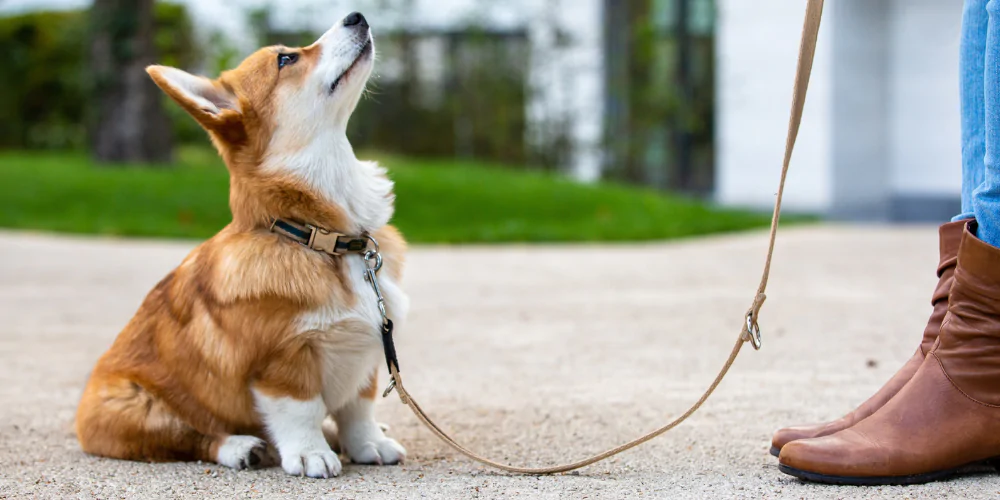
Beginning puppy training with the essentials
While you may want to teach your puppy how to roll over or give a high-paw to impress your guests, there are other training cues that should come first.
Your puppy’s safety should be your number one priority when thinking about training. With this in mind, the first three things you should train your puppy are handling, recall, and leave it.
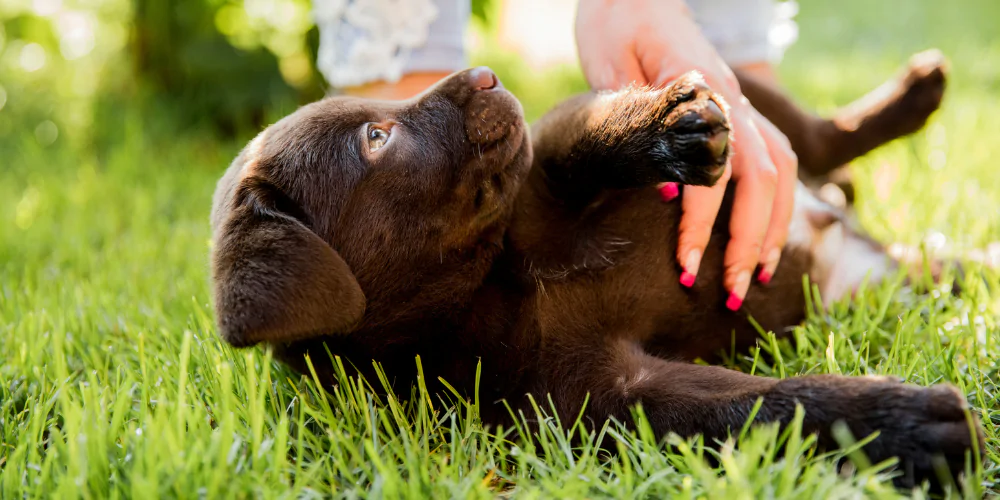
> Teaching your puppy handling
Handling just means that your puppy is comfortable with people touching them. You can train your puppy in handling by stroking all of their features, including their ears, paws, tail, and tummy.
To train them in handling:
- Take the time to sit down with them and go over all of their features, naming the body parts you’re touching.
- You can begin by stroking their back and slowly going down to their tail.
- If your puppy becomes distressed, take a step back. Their wellbeing is top priority here, so don’t push things.
- Go at a gentle pace and slowly build up handling different body parts.
You never know when your puppy needs to be handled by someone. If your dog becomes injured and needs to be examined, they can avoid unnecessary anaesthetic if they allow the vet to touch their body parts without becoming distressed.
If your puppy frequently shows signs of distress when being handled, there may be a medical reason behind their reaction. Speak to your vet and they will be able to advise.
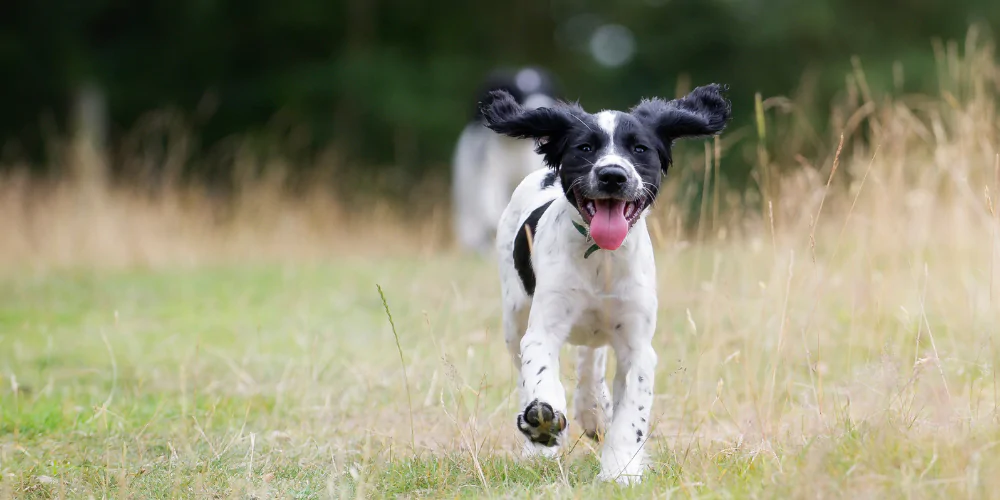
> Teaching your puppy recall
Recall training gives you the confidence to let your puppy do what they want, knowing they’ll return to you if you call them. Your puppy must know their name and respond to this, but this is not the recall cue.
The recall cue is a separate word, such as ‘come’, ‘return’, or ‘here’. When calling your puppy, say their name, then the recall cue. This will sound like “Fido, come”.
You need to be able to tell your puppy when they are doing the right thing:
- This is done by using a marker word.
- It can be anything from a clicking sound (or a clicker tool) to verbally saying ‘yes’.
- No matter which you choose, make sure you stick with it across training.
- This sound or word tells your puppy that they have done the right thing and that a treat will immediately follow.
- You must always give them a treat if you have used a marker.
Putting this into practice:
- If you’re calling your dog, give their name and recall cue.
- The moment they turn their head to move towards you, give your marker noise or word and show them the treat you’re going to give them.
- They have to return to you to get the treat, because your marker word acts as a transaction.
- If they hear it, they know they’ll receive a reward, giving them incentive to do what you ask.
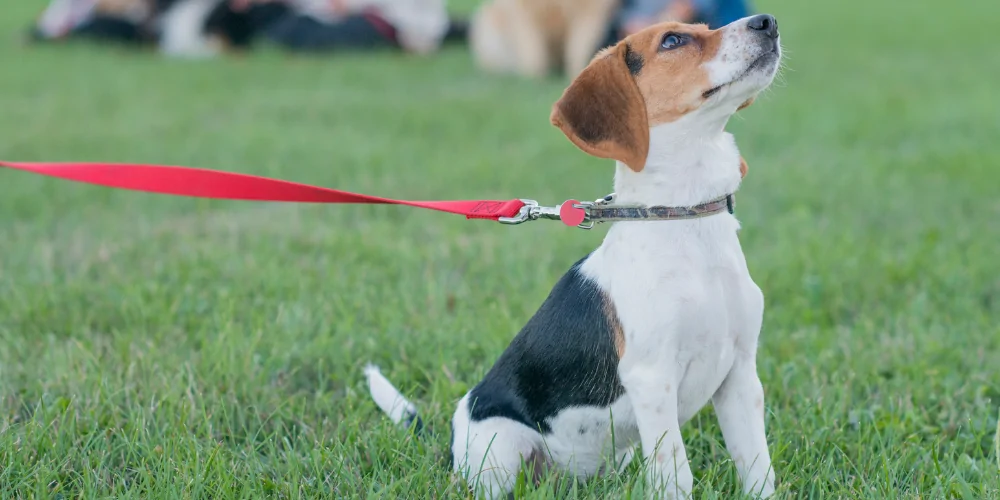
> Teaching your puppy ‘leave it’
The ‘leave it’ cue could be life-saving. The command is a preventative measure that keeps your puppy away from risky objects before they come into contact with them.
Your pup learns that leaving something (such as a potential danger) when commanded gives them a higher value reward instead.
To train your puppy the leave it cue:
- Offer them a low value treat in your open hand, such as kibble, and ask them to ‘leave it’.
- If your puppy goes towards your open hand, close it around the kibble.
- When your puppy backs away from the hand, give your marker word or sound and immediately feed your puppy a high value treat.
- It’s important you don’t give your dog the treat you’ve asked them to leave (the one in the closed hand).
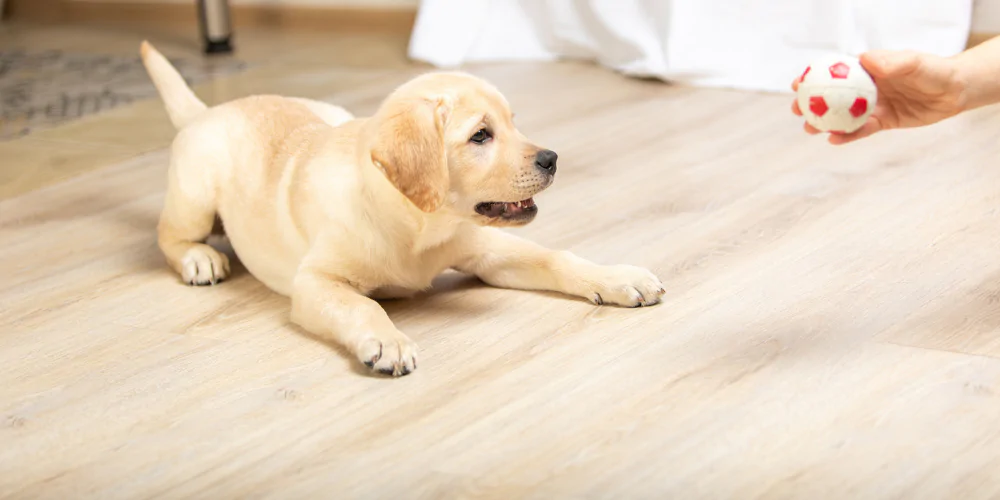
How can I make training a more fun experience for my puppy?
Training doesn’t have to be a long or tedious effort. Offering rewards to your puppy can help them retain information in their long term memory – but rewards don’t always have to be treats!
As you train your puppy, you’ll see what reward gets a positive response from them. This could be telling your dog ‘well done’, or even just giving them some playtime with their favourite toy. The important thing is to build a relationship with your puppy as you train.
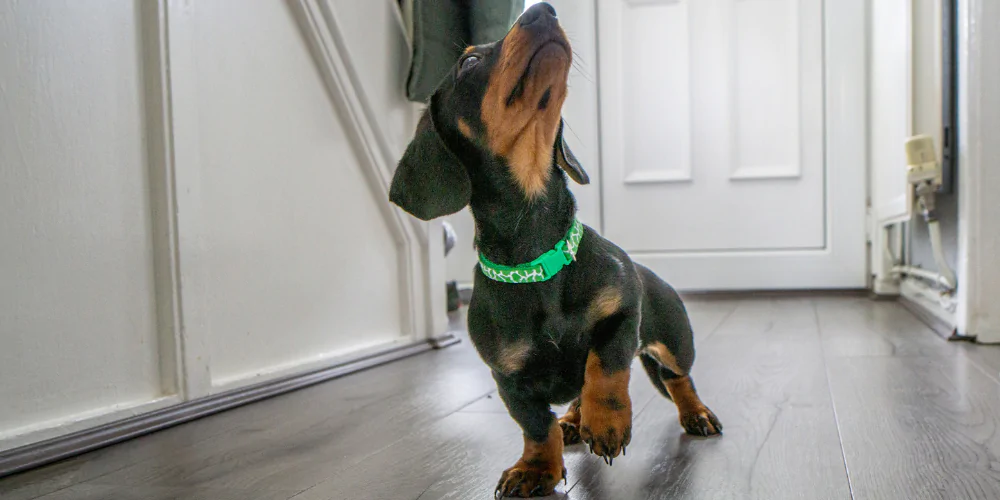
How long should you spend training a puppy?
You should train your puppy in each exercise for three or four repetitions, for no longer than 2 minutes at a time. After this amount of time, their learning stops and they can become tired or distracted.
A good time frame is by making yourself a cup of tea. Pop the kettle on, train your puppy in a cue, and as soon as the kettle is done boiling, training is over.
Puppies are keen learners. They can be trained in multiple things at once, but it may be best leaving it at two or three cues at a time to not overwhelm them.
> When should you start training a puppy?
No time is too early to start training your puppy! But always remember their mental, physical, and emotional needs should be your main focus.
For the first week of your puppy coming home, give them time to adjust to the new environment and family members. If they’re feeling extra shy, you could leave it an extra week before you start training.
Embarking on a new pet parent journey? Don’t forget to get your puppy flexible dog insurance from Petsure.


